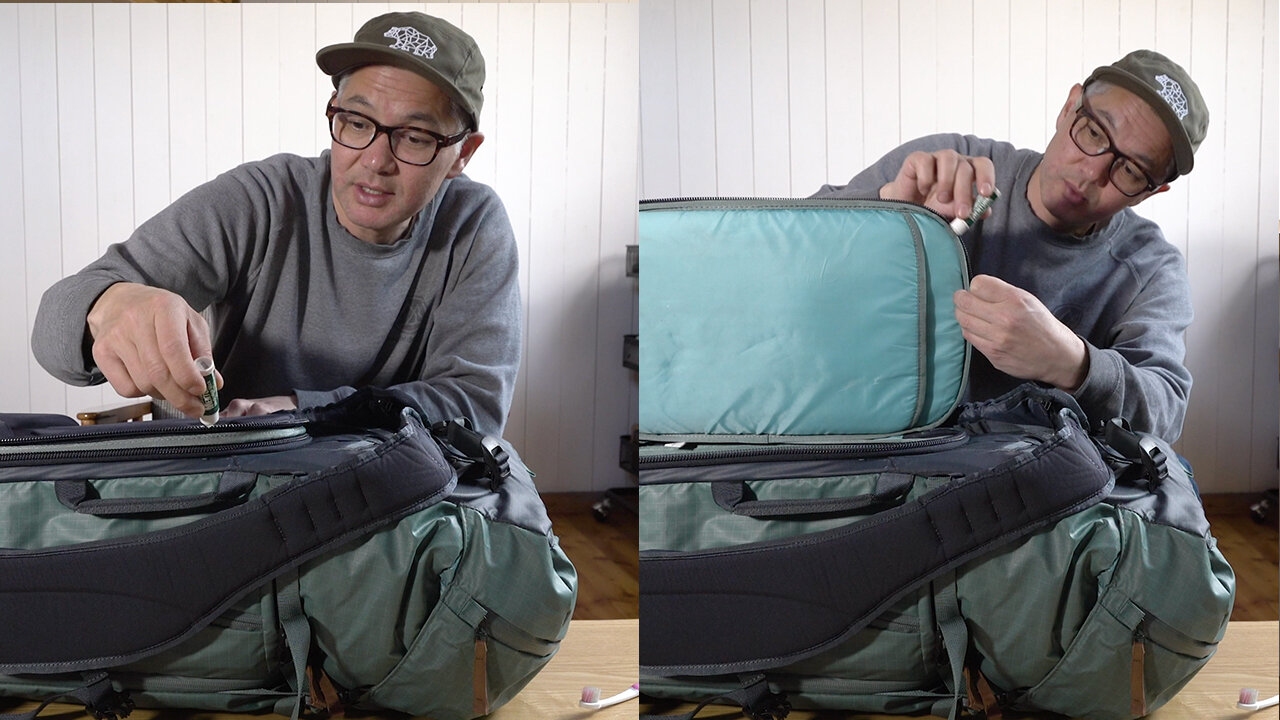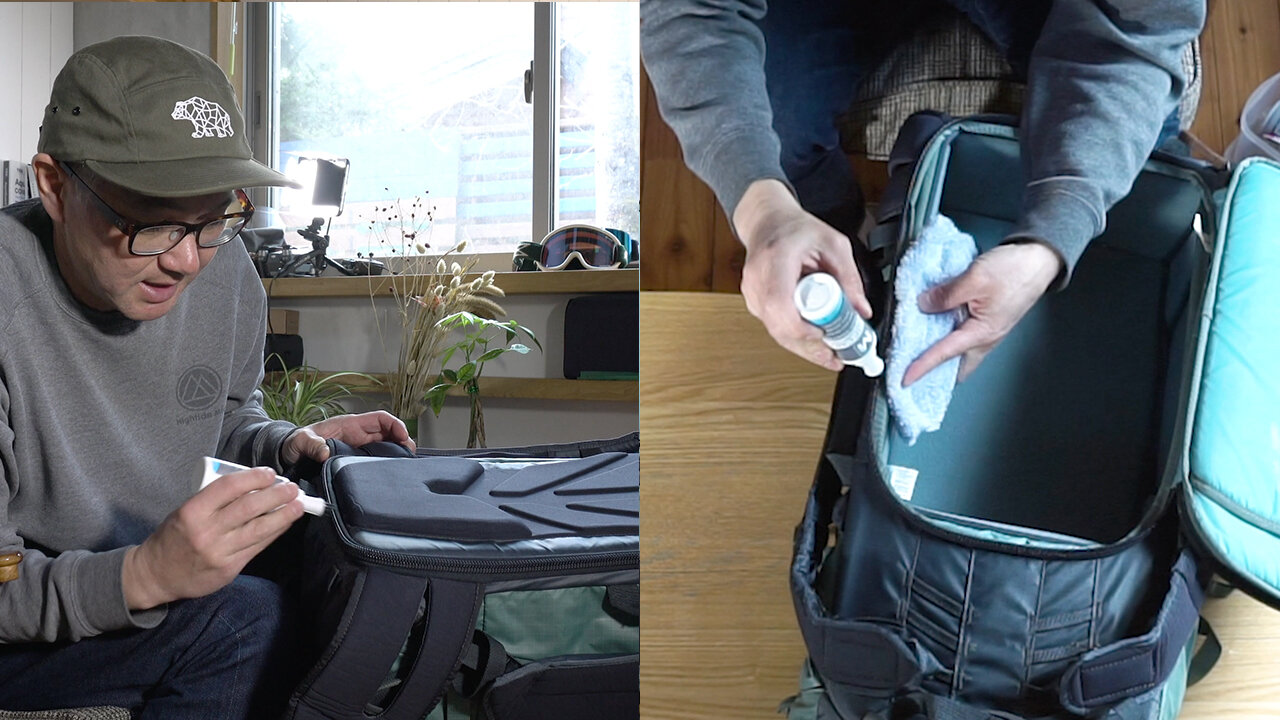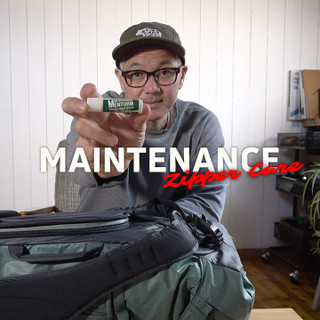GEAR MAINTENANCE: ZIPPER CARE
Apr 17th 2020
Zipper Care by Ian Millar
Zippers are a key backpack component, one that has yet to meet its revival when it comes to effectiveness and performance. Shimoda Designs uses YKK zippers as they have proven to be the most reliable zipper over the past 80 years. When you buy YKK you get the best (at least in our opinion).
In this article I will show you how make sure your zipper remains the best, by performing regular zipper maintenance.
There are many ways to maintain a zipper but for this article I will stick with a DIY version and a more polished consumer approach. You’ll see they are basically the same technique and achieve the same end goal. Which is too keep your zipper clean and running smooth. Both methods cost under $10USD.
Components
Before we get into it, I just want to say that zipper, buckles, tension locks… nearly all the components on your backpack - are manufactured by 3rd party suppliers. In simple terms, our designs are made of many different components, that are assembled together, to create one of our products. At Shimoda, we design and assemble gear. We do not actually manufacture all the components our goods are made up of.
Most premium brands choose from a select offering of manufactures that make the parts used when constructing their respective designs. Even the ones they/we design are manufactured at those ‘top’ 3rd party manufacturers. Some parts may be branded with a companies logo, but in most cases, it was still manufactured by a leading component supplier.
At Shimoda we actually manufacture at a factory who has over 150 CNC machines, we have the ability to manufacture our own Aluminum components but only do for our Rollers. Generally speaking Aluminum can damage goods secured to the outside of a pack (like Carbon tripod legs) and as a result we tend to avoid that potential.
It’s important to understand that we all have access to the same top suppliers who all produce nearly the same quality of product. In my opinion, it ends coming down to selecting the component that suits your product’s needs the best. With that said, it really puts weight on the design and development process of a product and understanding who you customer is.
A designer must to know what parts work for the products needs - and find a delicate balance of durability, efficiency and weight. We also need to understand what responsibility the consumer is willing to accept.
I’m mentioning this because, component suppliers manufacture a lot of goods each year. The chances of a manufacturer’s defect (IMO) are small. From what I have seen over my years… most breakdowns come from the end-user side of the relationship.
It is not to say ‘it’s-all-your-fault’. We will do our best to find a fix for the situation, but if a product is used correctly - and maintained - the chances of it breaking down are slim.
For some perspective YKK manufactures over 7 billion zippers per year - they have zipper manufacturing dialed. But if you jerk the zipper in the wrong direct with too much gusto, grind it against a rock or slam a car door on it – you risk damaging it. And that is not a fault of the 3rd party manufacturer.
With all that said, a problem we all face is; we are adventure photographers and ‘using it correctly’ isn’t always an option. Weather, time and fatigue often dictate how we use our gear, and it’s often not for the good of the pack.
Since we understand that zippers (and other components) are not indestructible, let’s learn how to maintain our zippers, so we can minimize potential breakdowns in the field.
1- D.I.Y. Chapstick /Lip Balm technique
The first method we will cover is a D.I.Y. technique. You’ll need some Chapstick or similar style product and an old toothbrush (or other small brush).
- Take the brush (dry) and manually clean the zipper tracks, just like you were brushing your own teeth. On PU (splash guard) zippers avoid brushing the PU side, you want to focus on the chain and its teeth.
- Once you’re finished wipe the zipper clean with a damp cloth – the let it dry (it should be quick).
- Take your Chapstick and rub it over the teeth. Try and get it so it’s relatively even while keeping the clumps of wax small.
- Once you’re done, open and close the area you have just worked a 3-5 times.
- Your zipper should now be running much smoother. If still rough or sticking, repeat the process in the trouble areas.

2- Zip Care by Gear Aid
The next way is to use a product made for this exact purpose – it’s all in one solution developed for this need. It’s called ZIP CARE by Gear Aid.
The top has a brush built into the cap, and when you pop the cap up upward – that will allow lubricant to bleed out through the brush. I prefer this method as it is an all-in-one product, relatively cheap and just a good tool to have in my outdoor gearbox.
- Start the process with the cap closed - and just like the DIY method brush clean the zipper track.
- Take a damp cloth to clean off any elements that may still be lingering.
- Let it dry and then pop the cap upward. Now, evenly brush the zipper chain while the liquid comes out. Keep the lubricant flow to a minimal.
- When you’re done, run the zipper track up and down so the liquid gets in all the corners of the chain’s teeth.
- Let it dry, your zippers should be back to running smooth again. Repeat if needed.

Cleaning your zipper is really important for people working around the sea and dessert but also those in action sports like mountain biking where you are dealing with a lot of airborne dirt.
If you are the type that lies on the ground to get shots – consider that the dirt on your back is going to be pushed into the zipper of your camera bags main access point. It will eventually seize if you do not maintain it. If it does seize and you force it – you’re dealing with the high-potential of breaking the zipper and having a permanently closed (or open) access point.
With all Shimoda products there is a required user-responsibly. We like to think our customers are savvy enough to understand the independent nature of outdoor adventure. So please consider your backpack an essential tool of your missions’ success.
A component breakdown in the wrong location- can become dangerous. Please, keep on top your gear!
Ian Millar
Founder


